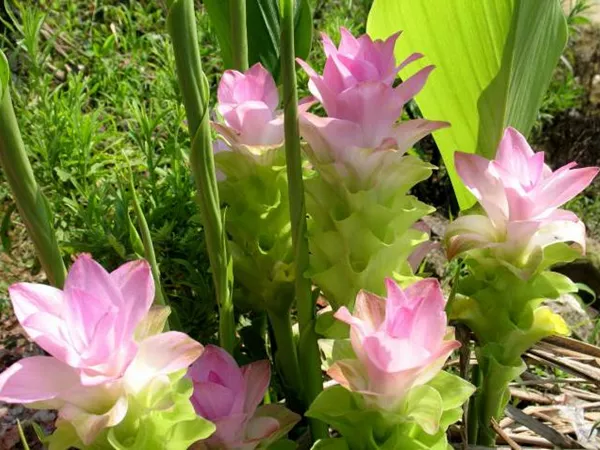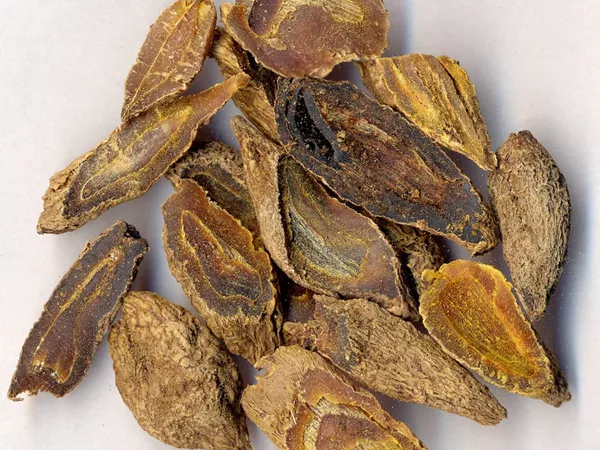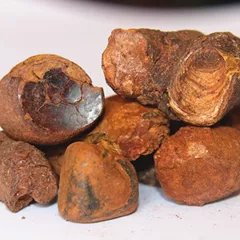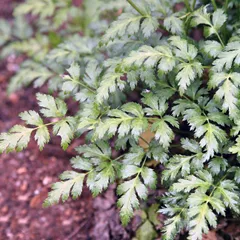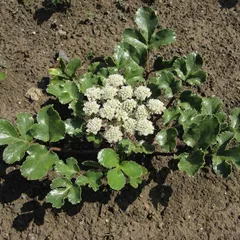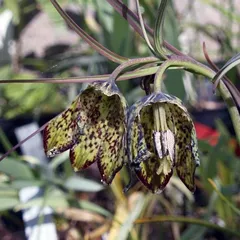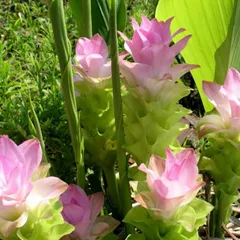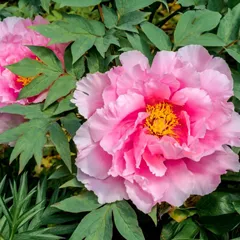Yu Jin
Yu Jin
English: Turmeric tubers
Chinese: 郁金
Use of Yu Jin (turmeric tubers) in TCM
Please note that you should never self-prescribe TCM ingredients. A TCM ingredient is almost never eaten on its own but as part of a formula containing several ingredients that act together. Please consult a professional TCM practitioner, they will be best able to guide you.
Preparation: Wash, moisturize, slice, and dry.
Dosage: 3 - 9 grams
Main actions according to TCM*: Moves Blood, breaks Stasis and reduces associated pain. Regulates the Liver and relieves patterns of Stagnant Qi with pain. Clears the Heart and Cools the Blood. Relieves Stagnation and clears Heat in the Liver and Gallbladder. Relieves jaundice.
Primary conditions or symptoms for which Yu Jin may be prescribed by TCM doctors*: Amenorrhea Dysmenorrhea Chest pain Abdominal pain Epilepsy Jaundice Delirium Gallstones
Contraindications*: This herb should not be used during pregnancy or by those without signs of Stagnant Blood or Qi. It should also be used with caution by those with Yin Deficiency from blood loss.
Common TCM formulas in which Yu Jin is used*
Niu Huang Qing Xin Wan
Source date: 1568 AD
Number of ingredients: 6 herbs
Formula key actions: Clears Heat and resolves Toxicity. Calms the Mind. Opens up the Orifices.
Conditions targeted*: Viral encephalitisMeningitis and others
Yu Jin is a deputy ingredient in Niu Huang Qing Xin Wan. This means it helps the king ingredient(s) treat the main pattern or it serves to treat a coexisting pattern.
In Niu Huang Qing Xin Wan, Yu Jin enters the Heart and Liver Meridians to cool the Blood, clears the Heat, promotes proper movement of Qi, and releases areas of stagnation. It helps Ox gallstone (Niu Huang) to clear the Heart and open the orifices.
Qi Ge San
Source date: 1732 AD
Number of ingredients: 8 herbs
Formula key actions: Regulates Qi and removes Stagnation. Moistens Dryness. Transforms Phlegm.
Conditions targeted*: EsophagitisEsophageal diverticulum and others
Yu Jin is a deputy ingredient in Qi Ge San. This means it helps the king ingredient(s) treat the main pattern or it serves to treat a coexisting pattern.
In Qi Ge San, Yu Jin facilitates the Qi movement, in order to remove Stagnation while also dispelling Blood Stagnation to disperse clumping
Xuan Yu Tong Jing Tang
Source date: 1826 AD
Number of ingredients: 10 herbs
Formula key actions: Pacifies the Liver. Removes Stagnation. Drains Fire. Unblocks the Meridians.
In Xuan Yu Tong Jing Tang, Yu Jin pacifies the Liver, relieve pain, moves Qi and eliminates Stagnation
Key TCM concepts behind Yu Jin's properties
In Traditional Chinese Medicine (TCM), Yu Jin belongs to the 'Herbs that invigorate the Blood' category. Like the name indicates these herbs tend to stimulate the Blood flow. In TCM they're used to help the circulation of Blood in cardiovascular conditions or menstrual irregularities as well as to treat acute pains caused by Blood Stagnation. They can also be used to treat Blood Stagnation when it causes certain tumors, cysts and hardened clots.
Furthermore Yu Jin is Cold in nature. This means that Yu Jin typically helps people who have too much 'Heat' in their body. Balance between Yin and Yang is a key health concept in TCM. Those who have too much Heat in their body are said to either have a Yang Excess (because Yang is Hot in nature) or a Yin deficiency (Yin is Cold in Nature). Depending on your condition Yu Jin can help restore a harmonious balance between Yin and Yang.
Yu Jin also tastes Bitter and Pungent. The so-called 'Five Phases' theory in Chinese Medicine states that the taste of TCM ingredients is a key determinant of their action in the body. Bitter ingredients like Yu Jin tends to have a cleansing action on the body by clearing Heat, drying Dampness and promoting elimination via urination or bowel movements. On the other hand Pungent ingredients tend to promote the circulations of Qi and Body Fluids. That's why for instance someone tends to sweat a lot when they eat spicy/pungent food.
The tastes of ingredients in TCM also determine what Organs and Meridians they target. As such Yu Jin is thought to target the Heart, the Liver and the Lung. In addition to regulating Blood flow, in TCM the Heart is believed to be the store of the 'Mind' which basically refers to someone's vitality. The Liver on the other hand is often referred as the body's "general" because it is in charge of regulating the movements of Qi and the Body Fluids. It also takes a leading role in balancing our emotions. In addition to performing respiration, the Lungs are thought in TCM to be a key part of the production chain for Qi and the Body Fluids that nourish the body.
Research on Yu Jin
Regular ingestion of turmeric reduces plasma malondialdehyde and increases red blood cell catalase activity and plasma albumin levels in hemodialysis patients.1
Gargling with turmeric by head and neck cancer patients undergoing radiation therapy provided significant benefit by delaying and reducing the severity of mucositis.2
Co-ingestion of turmeric with white bread increases working memory independent of body fatness, glycaemia, insulin, or Alzheimer's disease biomarkers.3
Sources:
1. Pakfetrat M, Akmali M, Malekmakan L, Dabaghimanesh M, Khorsand M. (2015). Role of turmeric in oxidative modulation in end-stage renal disease patients. Hemodial Int. , 19(1):124-31. doi: 10.1111/hdi.12204. Epub 2014 Aug 16.
2. Rao S, Dinkar C, Vaishnav LK, Rao P, Rai MP, Fayad R, Baliga MS. (2014). The Indian Spice Turmeric Delays and Mitigates Radiation-Induced Oral Mucositis in Patients Undergoing Treatment for Head and Neck Cancer: An Investigational Study. Integr Cancer Ther. , 13(3):201-10. doi: 10.1177/1534735413503549. Epub 2013 Oct 28.
3. Lee MS, Wahlqvist ML, Chou YC, Fang WH, Lee JT, Kuan JC, Liu HY, Lu TM, Xiu L, Hsu CC, Andrews ZB, Pan WH. (2014). Turmeric improves post-prandial working memory in pre-diabetes independent of insulin. Asia Pac J Clin Nutr. , 23(4):581-91. doi: 10.6133/apjcn.2014.23.4.24.
Use of Yu Jin as food
Yu Jin is also eaten as food. It is used as an ingredient in dishes such as Indian curries or Moroccan tajines.

